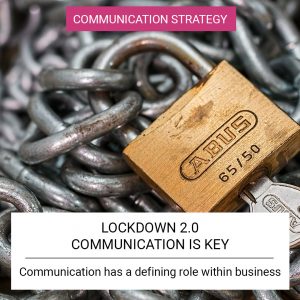
With the lockdown restrictions starting to lift, the next step of this crash course in handling a crisis is change management.
With the start of the New Year, comes many ‘New Year, New You’ sentimentalities. So, with that in mind, if you’re not already on the road to being recognised as a thought leader of your industry. Here’s the what, how and why becoming a thought leader is a worthy investment of your time.
Being a thought leader means that you’re seen as an expert in your field that actively and consistently provides advice, information, and ideas to an audience. It gives you the opportunity to connect with your audience, whether that’s potential customers or your industry peers, and offer them knowledgeable insight into topics that interest them. Being a thought leader is about being an authority, and having influence.
The main requirements for being a successful thought leader is to have passion for your chosen field, and to be authentic. What follows next is the doing part, which is quite simple. No doubt you’re already doing it at some level for your brand – if not, you should be! Consistently create and publish content. Not anonymously through your brand, but as an individual. The content can be in any format: an article, video, podcast – you name it, you can choose how to share your knowledge.
The key to being successful at becoming and being seen as a thought leader is to ensure that what you’re sharing is worthwhile, insightful and thought-provoking. From LinkedIn Pulse and medium.com, to industry magazines and newspapers, there are plenty of online and offline platforms to share your content.
From a goal setting perspective, the purpose of doing this is to grow your brand by attracting customers and building a reputation as an industry expert. Being a thought leader that consistently provides valuable and accurate information gives you credibility and builds trust in your brand.
From a psychological perspective, people are also more inclined to give you something (in this instance, their business), if you’ve already given them something first. Reciprocity feeds reciprocity. It can also open doors to new PR opportunities such as speaking at industry events, requests for quotes for news stories, or invitations for partnerships and collaborations with others too.
So, if you’re still wondering how to jumpstart the new 20’s decade, why not share your knowledge and opinions with those that will value it? Last piece of advice – don’t be afraid to have a differing opinion to others in your industry. It’ll set you apart. Happy New Year to the new you!
This article was first published in the Suffolk Free Press, Thursday 9 January 2020.

With the lockdown restrictions starting to lift, the next step of this crash course in handling a crisis is change management.

The biggest lesson to be learn from lockdown – that communication has a defining role in business strategy and survival.

Be proactive in lead generation. Create a steady stream of leads to convert into customers for your business using lead magnets.

Thomas Cook ceased trading on Monday 23 September 2019. With many experts saying its fate was inevitable, what can be learnt from the demise of Thomas Cook?
© 2019-2020 All rights reserved
Knight Media Communications Ltd | Company no. 12064990